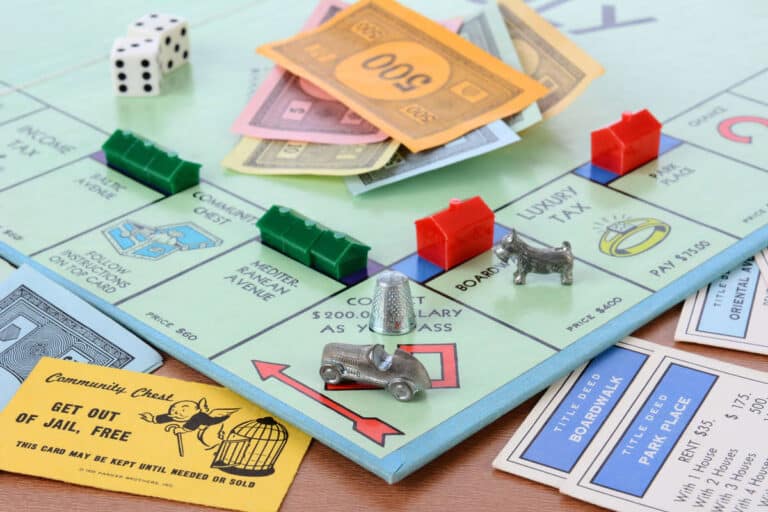9 CLIL Activities for the Foreign Language Classroom

If you’re familiar with Content and Language Integrated Learning, you know that it’s possible that math, history or art lessons can help your students learn another language. This methodology uses academic subjects outside of foreign language education as a vehicle to teach grammar and vocabulary.
With CLIL activities and games, you can employ this framework in your class on a short-term basis, engaging your students’ outside interests and boosting their proficiency. Let’s look more closely at how CLIL works and what activities you can use in your own classroom.
Contents
Download: This blog post is available as a convenient and portable PDF that you can take anywhere. Click here to get a copy. (Download)
What is CLIL?
CLIL is built on a simple premise: Teach subjects to students in a foreign language. For example, with students who are learning Japanese, you could teach art, math, geography, history or any other subject entirely in Japanese.
In this framework, comprehension is more important than memorization, and communication is more important than precise grammatical accuracy. CLIL provides a space for students to communicate naturally in the target language, picking up vocabulary in context and learning how to express their own, original ideas.
CLIL was coined in 1994, though many of its underlying principles had already been in use for years. This type of language education dovetails with bilingual teaching and shares many principles in common with language immersion programs.
For a walk-through of the CLIL framework in general, you can check out this guide. If you’re already familiar with it, here are nine fun CLIL activities that’ll liven up your class:
1. Describe and Draw

The main objective of this activity is to spark active listening in the target language. You’ll be giving your students instructions for creating a piece of artwork without showing them what the final image is supposed to look like. This activity can easily be adapted to classes of any proficiency level.
You’ll need:
- Colored pencils, erasers and papers or easels for all the students
- An image of an artwork that’s big enough to display in front of your class
- A list of instructions for how to recreate this image, which you’ll read one by one
Your instructions about the artwork can be as loose or as specific as you want. Surreal imagery works particularly well because it’s harder for students to predict, so they’ll have to listen attentively to the target language instructions.
Instructions:
Let’s say you’ve chosen René Magritte’s “The Son of Man”:
- Describe the artwork to your students so they can draw it. For example:
1. Draw the outline of a man from his knees up, putting his shoulders at the canvas’ center.
2. Put a beige brick wall behind him. Color the rest of the background blue for the sea up to his elbow, and gray with clouds for the sky above that.
3. Put him in a buttoned black jacket over a white shirt with a red tie and a hat.
4. Draw a green apple floating in front of his face.
- Once your students are done, have them compare drawings—this will usually get lots of laughter.
- Display the original image and discuss how your students interpreted your instructions.
- Make sure to go over any instructions they didn’t fully understand. Instead of offering translations, talk in the target language and draw or demonstrate what you’re saying.
2. Jeopardy
If you need a refresher for this classic trivia game, check out this post for some basics of playing and things to consider. In the CLIL framework, Jeopardy can be geared toward a specific subject such as history, literature or science, with questions and answers all delivered in the target language.
You’ll need:
- A list of questions and answers (Alex Trebek’s Jeopardy board has 30; you can adapt the number based on the size of your class)
- A Jeopardy board to display at the front of the class (some board-making tools are available online, such as Jeopardy Labs and Jeopardy Rocks)
From a CLIL standpoint, Jeopardy is useful because it can be adapted over and over to different topics. You can create a Jeopardy game about food one week and politics the next (though this also means preparing multiple sets of questions and answers). You may find that it’s easiest to work on the board little by little over the course of a unit, or use it to close out that unit or warm up before a test.
Instructions:
- The “what is” answer/question structure that Jeopardy is famous for can be needlessly confusing for foreign language learners, so stick with the regular question format instead. Prepare different categories for the questions and assign each question a certain number of points.
- To make sure everyone gets a fair shot at the questions, you can give each team only one question per turn, even if they were correct. Students have to answer the question in the target language.
- If the team answers correctly, they gain the corresponding number of points. But if they answer incorrectly, other teams can step in and answer the question to win the points.
- The team with the most points at the end wins.
3. Math Bingo
This CLIL math game will get students thinking, counting and calculating in the target language.
What you’ll need:
- Printed bingo boards for every student in your class
- Game pieces or chips for students to mark their boards
- A bingo cage or a pad and pencil to keep track of numbers you’ve called out
Instead of putting numerical values on the board, you’ll be using math problems. The first row of a board might read 8/2, 3+3, 2×7, 10-5, 4+3 instead of 4, 6, 14, 5, 7. However, you’ll still be calling out simple numerical values; this requires your students to do mental math in the target language.
Instructions:
- Prepare the bingo boards, with rows and columns having math problems instead. Here’s a free online resource that will automatically create a large, randomized batch for you. The simplest way to create a math-based board is to choose a number range—say, 0 to 30—and then type in a string of problems that equate to numbers between 0 and 30.
- To adapt this game to middle school and high school students, you can throw in more complex math concepts, like squares or longer multiplication and division. Don’t be afraid to ask your colleagues down the hall what math concepts you might want to include on your bingo board!
- Distribute the bingo boards to the student.
- Call out a number in the target language. Students will look for the math problem on their board that matches the number, then place a chip on it or mark it.
- Keep calling out numbers until someone gets a complete row or column. They can then shout out, “Bingo!”
- After the first game or two, your students should become as comfortable with this version of bingo as they are with the original.
4. Themed Collages
This is a fun activity to teach any age range about different styles, genres and periods of art in the target language. It also requires engagement with authentic materials.
You’ll need:
- A stack of magazines, print-outs, posters or any other material in the target language that can be cut up for a collage
- Examples of your chosen art genre/period to display for the class
- Scissors, glue/tape and poster board for students
This activity can be done individually or in groups, and it works for different age ranges. Students will be cutting up magazines or other materials to create collages that imitate a particular type of visual art. For a crash course on different art movements, you can look at The Art Story.
Instructions:
Let’s say you’re teaching pop art to your class of language students:
- Start by projecting images of work by Andy Warhol, Roy Lichtenstein, Tom Wesselmann and other big names in the genre.
- Ask your students what these artworks share; even the youngest students should pick up on the fact that they all use bright colors, eye-popping visuals and sharp lines. The older your students, the more advanced of a discussion you can lead.
- Get crafty. Give your students at least 20 minutes to put together their pop art-inspired collages. These should include the basic characteristics that came up during your lesson.
- Wrap up for 5 to 10 minutes by asking your students to jot down the features of their collage and how they relate to the art movement you’re studying.
- Let your students hand in their work.
5. The Amazing Map Race

This is a CLIL geography game that requires reading in the target language. The gist: Students follow your printed instructions to get from point A to point B on a map as quickly as possible.
You’ll need:
- Printed road maps of a city or neighborhood
- Printed driving instructions that you have written in the target language to get from point A to point B
- A batch of colored pens
Technically, this game can be played with a map of any location, but if you focus on an area where the target language is spoken, you get the benefit of familiarizing your students with an area they may ultimately want to visit as they strive for fluency. Moon Travel Guides has existing maps of select areas, while ViaMichelin lets you print road maps.
Instructions:
- Let’s say we’re playing this game with English language learners, racing from Grand Central Station to Times Square in New York City. Your printed instructions might look something like this:
1. Drive straight on W 43rd Street for five blocks.
2. Turn right on 8th Ave and drive straight for three blocks.
3. Turn right on 46th Street and drive straight for one block.
4. Arrive.
- Depending on your students’ proficiency levels, you’ll likely want to choose a more complicated route. To tie this game more tightly to geography concepts, you can use cardinal directions instead of “left” and “right,” and reference local landmarks in your directions instead of just street names.
- Students will use a red pen to “drive” along their map following your instructions. The first to hit point B with the correct path is the winner.
- Your role during the game is to answer questions. For example, with the instructions above, you might have to explain in English what a “block” is.
- You can put a fun twist on this game if your classroom has access to a computer lab. Instead of a pen and map, your students can use Google Street View to mimic the act of driving. They get a virtual on-the-ground exploration of a target language region, and it feels more like a real race, which can be exciting and motivating.
- If applicable, you can also use this game to teach about the places where your target language is spoken and certain countries’ colonialist histories.
6. What’s My Line?
Here’s one for the performers and creative thinkers in your class. What’s My Line is a theater-based game that requires reading a target language script and listening to direction to act it out.
You’ll need:
- A sandwich bag
- Target language sentences, expressions or questions printed out and cut out
- Some “stage” space in the front of your classroom with a table
What you’re ultimately looking for here is active listening, good pronunciation from your performers and engagement with new vocabulary. Your students will be saying lines out loud, and then their classmates will tell them what emotion to use when delivering the lines.
Instructions:
- Prepare target language sentences. These can be fairly straightforward—the idea is that the audience’s cues will make them interesting or even silly. Sentences like “the car is almost out of gas” read in an “overjoyed” tone of voice can get students listening and laughing.
- Before you begin this game, take some time to talk in the target language with your class about different emotions an actor might need to portray. Go beyond the easier options like “happy” and “sad” and focus on more specific emotions, such as feeling proud, indifferent, awkward, or disappointed.
- Since you’ll likely be teaching a lot of new vocabulary here, write down all the emotions mentioned on your board.
- Put the cut-out sentences into the sandwich bag and onto the table. Students who volunteer as performers will pick the sentences out of the bag to read in the style dictated by the class.
- You can either pick individual students to briefly act as “director” and tell the performer what style to act in, or if your class is mature enough, have them call out directions at will from the audience. They should be pulling from your earlier conversation, referring to the emotions listed on the board.
- To keep the game fast-paced, have each performer do three to five lines in a row before leaving the stage.
7. Two Truths and a Lie: History Edition
Two Truths and a Lie is a classic icebreaker game that many foreign language teachers may have already used. This version allows you to teach history through the target language in a fun and informal setting.
You’ll Need:
- Two true statements and one false statement prepared by each student
- A board or pen and paper to keep track of points
With this game, you’ve got students speaking and actively listening in the target language, while becoming more knowledgeable about the history of the culture they’re studying. Unlike the original Two Truths and a Lie, you can also play this game in a team setting.
Instructions:
- Have students come up with their truths and lies as homework. (You can assign different events or historical figures to your students to ensure that the game covers a diverse range of topics.) For example:
1. Benjamin Franklin designed the first American penny
2. Benjamin Franklin was an avid butterfly collector
3. As a teenager, Benjamin Franklin wrote fake letters under the name Mrs. Silence Dogood for his brother’s newspaper
The second Benjamin Franklin “fact” is the lie.
- One student recites three “facts” about a historical event or figure from the target language culture. Two are true and one is made up.
- The other students write down the “fact” that they believe is actually a lie.
- Everyone who was right gets a point; the student with the most points at the end of the game wins.
- Keep track of repeated grammar, vocabulary or pronunciation errors and alert students to them at the end of the game to avoid interrupting the game flow.
8. Artwork Presentations

These presentations are intended to promote speaking and reading in the target language. The concept is straightforward: Students present a piece of artwork to the rest of the class. Still, there are certain elements to keep in mind so you can make the most out of these presentations as a CLIL activity.
You’ll need:
- A projector, display board or some other way for students to show the class the piece of artwork that they’re presenting
- A list of specific points that you want your students to address in their presentations
To keep this activity in line with CLIL, let students decide on which artist to present. This will get them more motivated, and they’ll have to think critically and creatively. Make sure that you’ve taught enough grammar and vocabulary to give students a solid foundation for engaging with the artwork.
Instructions:
- Be clear with your students about the learning objectives for this activity. Explain that these artwork presentations should include specific details, such as biographical information about the artist and major artistic themes and philosophies, all in the target language.
- Give your students free rein to choose any artist from the target language culture that they want.
- If you’re teaching a beginner class, ask your students to provide a handout after their presentation with summary questions. For more advanced classes, tell your students they’ll also debate the quality of paintings they’ve presented on.
- Students can then proceed with their presentations.
9. Adopt an Artist
This activity builds on the artist presentation, and works especially well with younger students who may be less inhibited to perform in front of others. However, this activity requires artist research, so you should assess how much you’ll need to guide your students, based on their age and level. Students choose an individual artist to focus on—in this case, to “adopt.”
You’ll need:
- A projector, display board or some other way for students to show the class examples of artwork that their artist created
- Paper and pencils or chalkboard/whiteboard space
- Flashcards with conversation-starter questions
For a set period of time (such as one class period) your students will dress like their chosen artist, share that artist’s interests and speak about that artist’s work. There are three phases to this activity: presentation, flex time and analysis.
Instructions:
- Each student speaks briefly (5 to 10 minutes) to the class about the artist they chose. They should discuss what type of work the artist makes (painting, photography, film, etc.), as well as their basic biographical information and the major themes of their work. Students can also discuss their own costume choices.
- After the presentations, push all of the desks to the edges of your classroom and bring in some easels or free up chalkboard space for your students to draw together.
- Tell students that they can free write, free draw or interact with one another in the personas of their chosen artists. A Spanish language student who has adopted Salvador Dali might spend this time talking about surrealism with a student who has adopted Joan Miró.
- Bring in conversation flashcards with pre-written questions for students to ask one another as a jumping-off point. These can range from simple biographical questions (“Where are you from?” or “What art period were you part of?”) to more complex ones (“How would I recognize your artwork in a museum?”), depending on your class.
- At the end of your class time, give students 5 to 15 minutes to jot down some of their experiences during this activity. They can also hand in any individual or collaborative writing or drawing they did during flex time.
- For big classes, you can stretch out the three phases across three separate class periods.
With these CLIL activities, you’ll be able to spark a range of student interests while encouraging target language communication.
Another way to help students learn their target language through their interests would be to show them native media in their target language, such as songs and popular online videos. FluentU makes this more approachable for language learners because its library of videos comes with interactive subtitles, vocabulary lists and quizzes.
Your students will be picking up new language skills without even realizing it, while also becoming more knowledgeable about the different topics your activities cover.
Download: This blog post is available as a convenient and portable PDF that you can take anywhere. Click here to get a copy. (Download)







